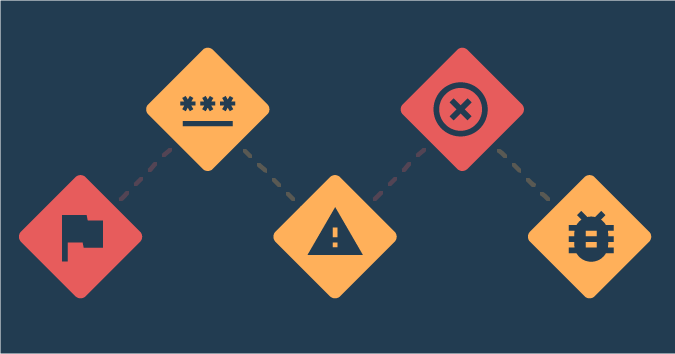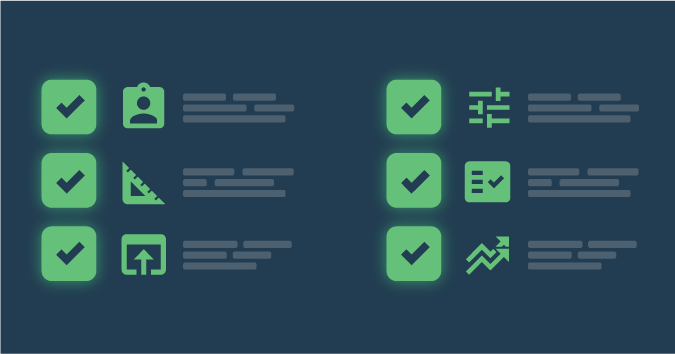This is a guest post by Peter G Walen.
Sacked. Made redundant. Let go. Laid off. Fired. The reason or cause doesn’t really matter. Even if you see or suspect it is coming, the reality can shatter your spirit and ego.
Whether it is the first or 101st time, the internal, private reactions can be hard to manage.
No matter how many times you tell yourself, “it wasn’t my fault” or “there was nothing I could do,” there is still a small voice saying differently.
What do you do next? Where to begin? This is my story on rising from the ashes.
Background
Some time ago I was in a conversation with a colleague and fellow participant in the local testing meetup. We were discussing how failure can be a great motivator. We talked about people who had overcome problems and adversity to rise to great things.
Of course, there are also many examples of people who break under adversity.
I don’t entirely know why the differences exist. Whether it was simply circumstances or something else. I don’t know why some people crumble, others recover and come back to where they were, and others rise to greater success than they have ever known. The last group, to me, resembles space capsules, like the old Apollo capsules, that would whip around the moon to accelerate and end up going faster than they were.
The second group, I kind of think of as being a bit like a rubber ball. Not a fancy “Super Ball” that used to be sold with the assurance that it would bounce higher than where it was dropped from (and rarely did as far as I know) but a plain bouncing ball. Comes back to where it was, but somehow not quite the same.
The first group, like I said. I don’t know why people fail to recover. They just don’t for a variety of reasons.
My First Time
I was moving up. I had left one company where I was simply unhappy and joined another company as a Test Lead. There were “issues” there. I was hired to improve testing and change the way testing was being done.
By the start of my second week, I knew this was not a good fit.I simply did not gel with much of the organization.I was able to get changes in place in the approach to testing, mostly over the strong protests of the pre-existing team.
Over the course of my tenure there, customer complaints went down after each release, instead of up. Customers were no longer threatening to cancel their contracts and go with another vendor. Still, there were problems – tensions in the team.
It became clear to the world things were not “working out.” I had a series of “those meetings.” In the last one I was handed a package and I walked out the door. Ironically, this was on a monthly “release day.” For the first time in the company’s existence, all testing and all the release documentation was complete the day before and the release went out early.
Still, I was gone. I knew it was coming, but I walked out the door.
What Next?
I went home, popped in a video, cracked an adult beverage, and said, “What happens next?”
Short term, I knew what had to happen – I needed to get ready to teach drum lessons that evening. I had a single beer, watched a movie, fried some bacon and eggs, and felt sorry for myself for 3 hours. Then I made a strong pot of tea because I had work to do.
I made a list of what I was good at and what I was not good at. The next step was to go through and identify the things I was good at and the things I liked to do. I also flagged the things I could do reasonably well but could get better at doing.
I looked at the things I was not good at. I split that list into three sections. First was “so what?” These were things that simply did not interest me, and I saw little demand for in the marketplace.
The next section was harder. This was “consider improving.” These were things I was not very good at and could possibly be interesting to learn about. They might not lead to an immediate job, but they could be of use later.
Then there was the list of “fix it”. I considered the things I had read about and had done very little with. I also looked at things I knew very little about. This included things I knew nothing about, but I’d seen mentioned in articles and blog posts that seemed worth looking into.
I did some serious soul-searching on what I really wanted to do. I looked at how I would fix what I needed to fix. This was hard. It also took focused work to learn what I could.
This led me to updating the resume and LinkedIn profile. I looked at what I wanted to do and where I wanted to do it.
I learned a lot. I’ve been applying those lessons ever since.
Other Circumstances
Then there was the time when most of my department was sent packing. Something about a “realignment” and “needing different people to take us to the next chapter.” Sure, there was training “offered” as long as we could keep doing our primary job and learn the new skills demanded and gain experience with the skills while working.
If you took a “skills test” around the new, required skills, you could possibly be reclassified as a “junior” or “associate” and have a job. Unless you were remote. Then you could relocate so you could work in the office at your own expense.
I took an alternative path. I did what I could to train my team in what I did so they could do good testing when there wasn’t a dedicated testing specialist in the team. I wanted them to be able to continue doing good work, and not be blamed when problems appeared in the software.
When the day came that all of us who were being “realigned” were let go, I bid farewell, wished them luck and offered any unofficial help I could give. I still hear from some of them from time to time.
Contracts
Contract work is slightly different. You know it will end at some point. There may be a fixed end-date. There may be a “potential renewal” point. Contracts may be renewed or not, depending on the terms. Open-ended contracts, or engagements with no fixed end-date effectively mean the gig can be up at any time.
The point of bringing on contractors to do work is they are expendable. They can be sent packing at nearly any time if the need arises. It could be poor performance on the stock market, management changes leading to a “change in direction.” It can also end because of a large global pandemic.
Work hard and do the best work you can do to fill the client’s needs. This is what makes you a conscientious professional. Build contacts and offer support and focus on the needs of the teams you are working with. Help them improve and do better work. They may just remember you for it and be willing to stay in touch.
The trick to contract work, is to always be looking for the next contract. Be open. People may reach out and ask if you are available. Let them know the expected end-date of the contract. Also, let them know you’d be open to having a discussion should things change.
If they have dealt with contracts before, they will know that things often, and always, change. Usually not because of the individual. That is an important lesson to remember.
And Now
We are in uncharted, unknown territory. We have loads of people out of work. We have people genuinely worried about family and friends. We have support systems absolutely overwhelmed with calls for aid.
How do we support our families when there is no certainty? How do we support ourselves?
My lessons from the first time I was sacked come to mind – and they are what I have been actively engaged in.
My Lessons
Be involved. Online, locally, within the company, within the team. Look for ways to learn and improve. If someone looks for advice, guidance or a sympathetic ear, do what you can. If something sounds familiar to a situation you were in, talk with them about your experience.
Stay connected. Maintain contact with team members and colleagues particularly when there are mass reductions or furloughs. Support each other by sharing job leads and learning and training opportunities. Most importantly, allow each other to express frustration they might not be able to express with other people, including partners and families.
Share. In some ways this is similar to the first lesson. Write. Blogs, forum posts, responses to posts or online articles.
Learn. Keep learning, keep reading, keep thinking.
Dare. If you’ve been let go, that is the worst the company can do. You have nothing to lose from moving boldly. Being concerned if not scared is understandable, particularly if you have a family to support. Do not let that consume you.
Repeat. Keep doing this. Never stop.
Most important lesson
You don’t need to get fired/sacked/down-sized/happy-sized/whatever to reinvent and re-launch yourself. Learn things to share and grow. Get involved by helping others. Reach out and ask for help. Share with others. This will help you feel less alone. It will also help others feel less alone.
The fact is, doing these things may not make you a leader or a software ninja. It may not lead to you being called an expert. But, when the world comes tumbling down around you, if you have been doing these things, others can step up and help. If you have established connections and a reliable cadre of people, they can help just as you can help them.
COVID-19 Postscript
A very personal note from the Author. While this was being prepared for publication, I was asked a really important question: Given the current situation many people find themselves in, what advice or suggestions might people benefit from RIGHT NOW?
Here’s where I would start.
Reach out – Let people know you were let go and you are looking for a position. You and thousands of others are in the same boat. Tell everyone you know. If they are still working, they may know of something that has not yet been published at their employer. People who know you and respect you can help you land a new job much faster than blind, on-line applications.
Update – Update the Resume/CV. Update LinkedIn. Think HARD about what it is you want to do and where you draw your energy from. The ideas mentioned about improving are precisely what I have done, and what I am currently doing. Polish the CV. Polish the Resume. Make multiple versions depending on the type of positions you are looking for. Emphasize skills used in different jobs differently on the various versions of your resume.
Be Flexible – Many people want a “full time” gig as an employee. It can be easier than contracting, just remember, contract houses might not be a bad option. A 6 or 12 month contract might help hold you over and give you the opportunity to learn new skills.
Look – Aggressively. This is your new job. Set up searches on LinkedIn. Look to see what comes up. There may be postings you would not have thought to look for. Here’s the hard part, don’t blindly apply to every one. Look to see if the posting has a person’s name associated with it. Reach out to THEM. Use the messaging or InMail feature to reach out to them and express an interest in the position. If there is no person associated with the posting, look among the people you know or are connected with. Do THEY know anyone at that company? You can also search for “people” at the hiring company and reach out to one who looks likely to know about the position announcement. These might be Leads, Managers or Directors. They could be Senior or Principal developers, architects or testers.
Look some more – Other places you can look? Use your favorite search tool. Enter search criteria for the type of position you are looking for, with a general location you want to work in. Simple fact is, most organizations have tech people working remote right now. If you add “remote” to your search terms, you likely will get loads of positions you need to wade through that are not suitable for you.
Other places to look – There are a stack of websites that are worth looking at. Some require you to sign up. Some give you an option to load a resume so employers can find you. Don’t be shy. Do it. Load the resume. You never know what might happen. So, where to do this? There are loads of job websites you might check out:
- Dice.com
- Indeed.com
- Glassdoor
- Monster.com
Look for regional sources. There are websites and services for individual countries, nations, states and localities. State and regional unemployment assistance offices may have jobs listed that can fit the bill.
Finally – Be patient. Be persistent. Remember that while you are under loads of stress, so is everyone else. If there are people depending on you to provide for them, be particularly kind to them. If you live alone and are dealing with this apart from family and friends, reach out. Call text, video call. Have voice conversations as much as possible. Know that you are not the only one struggling. Be kind to others. Be kind to yourself.
There may be help unlooked for, even in the darkest places.
Peter G. Walen has over 25 years of experience in software development, testing, and agile practices. He works hard to help teams understand how their software works and interacts with other software and the people using it. He is a member of the Agile Alliance, the Scrum Alliance and the American Society for Quality (ASQ) and an active participant in software meetups and frequent conference speaker.





